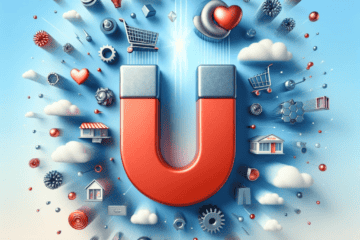Over the years, the misalignment between sales and marketing teams has been a common challenge for businesses. In order to drive revenue and achieve business success, it is crucial for these two departments to work together seamlessly.
In this blog post, we will explore strategies and techniques to bridge the gap between sales and marketing, ultimately improving collaboration, enhancing communication, and maximizing overall performance.
- Key Takeaways:
- Clear and consistent communication is essential for aligning sales and marketing teams to achieve shared goals.
- Shared KPIs help align sales and marketing efforts with overall business goals, enhancing collaboration and accountability.
- Regular interactions and meetings between sales and marketing teams build trust and facilitate the exchange of insights.
- A feedback mechanism allows sales to inform marketing about lead quality and campaign effectiveness, helping to refine strategies.
- Using technology tools like CRM systems streamlines lead management and improves collaboration between sales and marketing.
Understanding Sales and Marketing Misalignment
For many organizations, the lack of alignment between sales and marketing teams can have detrimental effects on the overall business performance. This rift often leads to missed opportunities, confusion among customers, and a decrease in revenue generation.
Without a cohesive strategy, both departments may end up working at cross-purposes, ultimately impacting the company’s bottom line.
To address sales and marketing misalignment effectively, it is crucial to understand the underlying reasons behind this disconnect. Common root causes include differing goals and priorities, lack of communication and collaboration, and inadequate sharing of data and insights.
By pinpointing these issues, organizations can take targeted steps towards fostering greater alignment between sales and marketing teams.
For instance, implementing regular joint meetings between sales and marketing leaders can help bridge the communication gap and ensure both teams are working towards shared objectives.
Strategies for Better Alignment
Effective alignment between sales and marketing teams is crucial for enhancing business performance and customer satisfaction. Here are some strategies to improve this collaboration.
1. Establish Shared Goals and Metrics
Define objectives that benefit both sales and marketing, and track KPIs relevant to both teams.
This ensures all efforts are unified towards common business goals and fosters a collaborative environment.
2. Map the Unified Customer Journey
Detail the customer experience from initial awareness through to post-sale support, ensuring consistent messaging and touchpoints.
This coordination improves the customer experience and facilitates a smooth handoff from marketing to sales.
3. Prioritize Customer-Centricity
Focus on the customer’s needs and preferences in every marketing and sales activity.
This approach builds trust, enhances customer loyalty, and aligns both teams towards providing value and solving customer problems.
4. Frequent and Structured Communication
Implement regular meetings and communication channels between sales and marketing to share insights, updates, and feedback.
This promotes understanding and helps adjust strategies based on real-time information.
5. Integrate Technology and Data Sharing
Use CRM and other technology tools to share data and insights between teams.
This integration enables better lead management, personalized customer interactions, and more effective campaign adjustments based on shared data.
Implementation of Alignment Tactics
Unlike in the past, where silos between sales and marketing departments hindered effective collaboration, today, companies have a plethora of communication and collaboration tools at their disposal.
An integrated platform like Slack or Microsoft Teams can facilitate real-time communication, file sharing, and project management, breaking down barriers and fostering seamless collaboration between sales and marketing teams.
Collaboration between sales and marketing requires a deep understanding of each other’s roles, goals, and challenges. Training programs that focus on aligning these two departments can be a game-changer.
By educating both teams on the buyer’s journey, lead management, and key performance indicators, organizations can ensure that everyone is working towards the same objectives and speaking a common language.
Alignment in training and development goes beyond just theoretical knowledge. Hands-on workshops, shadowing opportunities, and joint projects can provide practical experience that reinforces alignment principles and fosters a culture of teamwork between sales and marketing.
Monitoring and Evaluating Progress
Effective monitoring and evaluation of sales and marketing alignment are crucial for organizational success, and many successful companies achieve this through Key Performance Indicators (KPIs).
Metrics such as lead generation quality, conversion rates, sales cycle length, and revenue from marketing efforts are tracked regularly to assess alignment effectiveness and guide necessary strategy adjustments.
This systematic approach ensures continuous improvement in collaboration between sales and marketing teams.
To further enhance alignment, organizations must prioritize regular review and feedback sessions where both teams can discuss challenges, share customer insights, and provide constructive feedback on each other’s efforts.
Establishing a regular cadence for these sessions, whether weekly, bi-weekly, or monthly, ensures consistent communication and alignment efforts.
During these meetings, teams should focus on discussing recent successes, challenges, and areas for improvement, with clear action items and follow-up plans to address any identified gaps.
Final Thoughts | Unleash the Power of Unity
The key to a company’s triumph lies in seamlessly aligning sales and marketing teams to create a collaborative powerhouse that drives communication, boosts efficiency, and skyrockets revenue.
By sharing goals, insights, and embracing data-driven strategies, these teams not only work in harmony but also enhance the customer experience, ensuring every interaction is smooth and impactful.
This unity is essential for any organization aiming to thrive in the competitive landscape of today.
To truly capitalize on this alignment and transform potential into performance, consider investing in field sales software that optimizes every aspect of your sales and marketing efforts.
Embrace the future of business growth – make the smart move now!




















